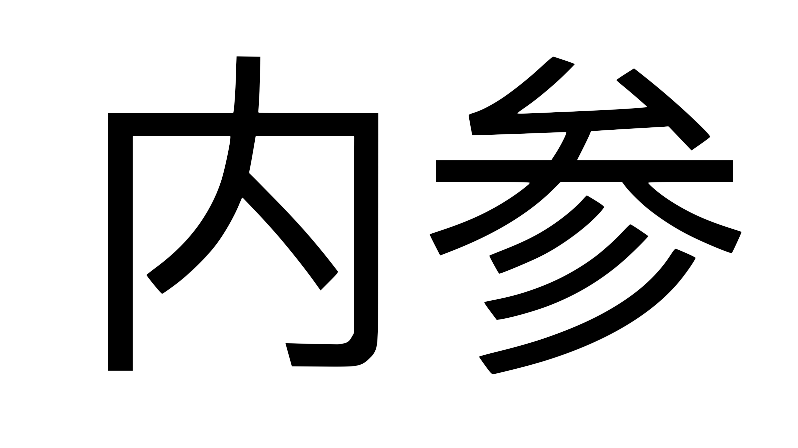China Scholarship Digest #17
China Scholarship Digest is a monthly list of new China-related academic research.

Articles published in November 2022
69 journals scanned
75 articles from 24 journals found
Chinese Studies
The China Journal
📍
"This article investigates the reasons for the emergence of bureaucratic slack in China’s political system. It verifies two popular hypotheses, namely, reduced material inducements and increased risk...Our survey also reveals differences across groups of local cadres...bureaucratic slack among lower-ranked cadres [ar] caused mainly by the lack of material inducements, while higher-ranked officials are more discouraged by increased risks."
📍
"Leading small groups (领导小组, LSGs) are widely presumed to be the most important mechanisms for coordinating policy among the various government and Party bureaucracies in the Chinese political system. This article evaluates this assumption...I demonstrate that some LSGs coordinate more effectively than others and argue that the reason for variation can be found in two factors: bureaucratic policy conflict and group leader authority. I argue that leader authority can spur agency coordination and move policy forward, while bureaucratic conflict can otherwise hinder coordination and create policy delays. Interaction between the two factors shapes the effectiveness of an LSG."
- Farmer Cooperatives and the Limits of Agricultural Reform in Rural Hubei
- Governing “Untrustworthy” Civil Society in China
📍
"The Chinese Party-state’s repression of politically sensitive social organizations is well-known. Less known, however, is how the central state has governed a broader range of social organizations that have violated laws or regulations and are hence considered “untrustworthy” in the context of the social credit system...The study finds that, on the one hand, the Xi Jinping administration has increased governance transparency by selectively publicizing untrustworthy organizations through the social credit system and standardizing their punishments. On the other hand, the administration continues to be opaque about its treatment of more politically sensitive organizations, such as those advocating for civil rights or representing marginalized communities...This governance approach breaks from the past in rendering civil society more legible while continuing the Party-state’s tradition of flexible control."
📍
"This essay explores and assesses how the state has attempted to expand its control over village cadres through a process of top-down “professionalization”... I demonstrate that the professionalization of village cadres has taken place across four key dimensions: (1) cadre salary, (2) evaluation criteria, (3) office structure, and (4) training workshops. I argue that through the process of professionalization, village cadres have increasingly come to resemble state officials. However, professionalization has been only partially successful in increasing village cadres’ compliance with the state. Most critically, these reforms have failed to establish an adequate reward mechanism for village cadres, who have no opportunity for promotion and are poorly paid. As a result, the state’s ability to control and mobilize village cadres has not significantly improved."
Journal of Contemporary China
- The Political Limits of China’s Anti-Corruption Reform: An Institutional Analysis of the New Supervision Commission
- How China’s Online Nationalists Constrain Policymaking – the Case of Foreigners’ Permanent Residency Reform
📍
"Popular nationalism increasingly dominates public debate in mainland China. This article examines the impact of this trend on Chinese policymaking by looking at the public consultation procedure for new regulations on foreigners’ permanent residency in February 2020...the article analyzes elite-public interactions before, during, and after the controversy, asking what factors contributed to this miscalculation of public sentiment, and what the P.R. debate can tell us about the role of public opinion in Chinese policymaking today. It argues that popular nationalists can play a bottom-up politicizing role on previously marginal policy issues such as immigration, surprising and constraining the state. Such politicisation further limits both public and elite policy debate, impairing state information gathering and exacerbating the tension between Chinese policy actors’ desire to both control and understand public sentiment."
📍
"Since late 2016, Ningxia has drawn attention as a new target in Beijing’s drive to ‘Sinicize Islam.’ The removal of overt signs of the Islamic faith and Arab influences is viewed as representing a new front in the CCP’s sweeping rollback of religious freedom. Is Ningxia another Xinjiang as both the party and its critics fear? This paper argues that it is not at the empirical level but shares with Xinjiang key underlying dynamics at the systemic level. At the empirical level, Ningxia’s ‘Islamization’ stemmed largely from local authorities’ use of the Islamic part of Ningxia’s heritage as a developmental strategy, leading to so-called pan-Halalfication, Saudization and Arabization. In contrast to more complex social dynamics in Xinjiang, Ningxia’s ‘Islamization’ can be more easily dealt with by withdrawing the local state’s own promotion. At the systemic level, the rise and fall of Islamization in Ningxia share with Xinjiang’s case the critical role of the state in affecting the fate of religion for significant ethno-religious communities."
China Quarterly
📍
"Industrial parks in north-west China occupy a liminal space between labour camps and private industry...this article shows that for-profit public-private industrial parks have been built as part of a “camp fix” mechanism centred on detaining and “re-educating” Uyghurs and Kazakhs at the periphery of the nation...these industrial parks concentrate forms of repressive assistance and “dormitory labour regimes” that operate at other frontiers of Chinese state power and point these strategies of disempowerment towards a seemingly permanent, ethno-racialized underclass, producing a “re-education labour regime”... the material infrastructures of these surveiled and policed spaces themselves are productive in enforcing the goals of the “camp fix”: the creation of high-quality, underpaid, docile and non-religious Muslim workers who are controlled through the built environment."
- Low-carbon Frontier: Renewable Energy and the New Resource Boom in Western China
- High-metabolism Infrastructure and the Scrap Industry in Urban China
- The Making of Natural Infrastructure in China's Era of Ecological Civilization
- Incomplete Catching Up: Income among Yi, Manchu and Han People in Rural China, 2002–2018
- Visual Framing: The Use of COVID-19 in the Mobilization of Hong Kong Protest
- Popular Contention and Progressive Legal Repression in China
- Proletarian Power Misplaced: The Worker Propaganda Teams in Shanghai during the Cultural Revolution
📍
"In 1968, at the height of the Chinese Cultural Revolution (CR hereafter), Mao Zedong mobilized industrial workers to form Workers’ Mao Zedong Thought Propaganda Teams...and to “occupy” the superstructure. This move empowered the working class in an unprecedented way. Did Mao's move bring about a new model of worker power under communism that was distinct from Lenin's vanguardist model and Rosa Luxemburg's model based on her perception of workers’ spontaneity and creativity? In contrast to the workers’ spontaneous rebel groups during the first two years of the CR, the WPTs were a quasi-institutionalized form of worker power created by the political elite to serve the CR agenda. It was also the Mao leadership's attempt to realize the leading role of the working class by absorbing workers into the structure of political authority, an attempt which reflected the Party's declared ideological principle. While the WPTs provided workers with opportunities to participate in politics, they were a misplacement of worker power in both social and organizational senses. The article examines the roots of this power misplacement and explores the dilemmas it brought for the Party as well as the working class itself, and why."
